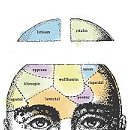In a special issue within the journal Psychology & Sexuality, researchers Lucy Cowie and Virginia Braun from the University of Auckland published their study on a group of queer and gender diverse young people’s (QGDYP) explanations of their psychological distress. QGDYP experience higher levels of psychological distress than their cisgender heterosexual counterparts due to heterosexism. However, there has not been much research investigating how these young people make sense of their experiences of mental distress.
Their research aimed to address this gap through a qualitative study of QGDYP’s experiences of heterosexist discrimination and their understanding of mental health. Given the often lackluster education of mental health professionals on LGBTQ+ issues, they hope their findings can inform strategies to support QGDYP’s mental health. The researchers interviewed 21 QGDYP 16-18 years old living across New Zealand and, using a critical realist thematic approach to analysis, came up with three major themes.
 The first was participants’ acknowledgment of cisheterosexism as pervasive in society but often downplaying its impact on them. They noted that many participants reported personal experiences of discrimination based on their identity and that cisheterosexism and cisheteronormativity cause mental health difficulties. However, participants tended to say they were ‘lucky’ because they didn’t experience what they deemed as ‘severe’ enough episodes of discrimination.
The first was participants’ acknowledgment of cisheterosexism as pervasive in society but often downplaying its impact on them. They noted that many participants reported personal experiences of discrimination based on their identity and that cisheterosexism and cisheteronormativity cause mental health difficulties. However, participants tended to say they were ‘lucky’ because they didn’t experience what they deemed as ‘severe’ enough episodes of discrimination.
The authors contextualized this theme by acknowledging the difficulty of being affected by it when they hadn’t personally experienced the most brutal forms of violence and discrimination. The authors note:
“Through framing their life experiences as ‘quite easy,’ Jordan evoked a ‘strong’ subject position, someone able to withstand such ‘petty’ injuries. Yet such descriptions somehow also risk normalizing discrimination and injustice for trans people and suggesting they aren’t that consequential. From a mental health and wellbeing perspective, this normalization of harm risks invisibilizing its (often) harmful impacts. More importantly, it risks setting an unreasonably high standard before QGDYP feel they can legitimately describe being affected.”
The second major theme was that the participants felt that their experiences, perspectives, and identities were often dismissed by family members and others in their community. Participants reported feeling a lack of acceptance, with parents often not listening to them and saying that their identity is ‘just a phase,’ suggesting it is simply a form of confusion, rebellion, or experimentation. This dismissal was often tied to adults around them chalking up their psychological distress as developmentally typical for their age group, de-legitimizing their distress based on their queer and gender-diverse identity.
When asked what advice they would give to people who work with QGDYP, participants continually emphasized the importance of “just listening” to them and legitimizing their experience. Given that acceptance of LGBT identities is tied to lower suicide rates, this theme is especially salient to improving the mental health of QGDYP.
The third major theme developed from the analysis of interviews was participants’ sense of validation and comfort in the biomedical model of psychological distress. Given the context of being dismissed, participants were often eager to emphasize the similarities between physical and mental health to have their distress acknowledged as ‘real’ and important. Participants often invoked biomedical language to describe their psychological distress, such that they had a broken brain or an illness, rather than seeing themselves as broken people. They also supported using medications “to help stabilize brain chemistry back to normal functioning” and felt optimistic about receiving medications to improve their mental health.
This theme also included many participants’ acceptance and support for psychiatric diagnosis, as it was often considered validating. By receiving a diagnosis from a mental health professional, they felt their distress was finally ‘seen’ and significant enough to warrant help from others.
However, participants felt that self-diagnosis was particularly harmful in de-legitimizing mental health struggles, invoking the “Tumblr girl” as a prototype for someone who does not take diagnoses seriously and self-diagnoses for attention. These QGDYP participants felt that while receiving a diagnosis was positive; it was only helpful if it was accompanied by self-improvement rather than using it to justify blaming others for their suffering.
The researchers noted that throughout participants’ accounts were neoliberal discourses of personal responsibility. To be a “good subject,” participants acknowledged the systemic nature of cis-heterosexism but positioned themselves as being somewhat unaffected by it and giving biomedical explanations for their psychological distress.
Once they sought help from psy-experts, they felt obliged to work on improving themselves if they wanted their distress taken seriously. The authors caution those working with QGDYP on the downside of promoting neoliberal agency to the detriment of collective action:
“Although this strong agentic self and a biochemical imbalance model might be affirming at the individual level – and articulable in an interview context – they potentially undermine advocacy against cisheterosexism as a determinant of increased distress among QGDYP. It is therefore important for those working with QGDYP to recognize and validate their distress as real and important, and to recognize the limitations of individualized discourses of the impacts of cisheterosexism in changing unjust social structures.”
****
Cowie, L., & Braun, V. (2021). Between social and biomedical explanation: Queer and gender diverse young people’s explanations of psychological distress. Psychology & Sexuality, 1–12. https://doi.org/10.1080/19419899.2021.1933147 (Link)















removed for moderation
Report comment
removed for moderation
Report comment